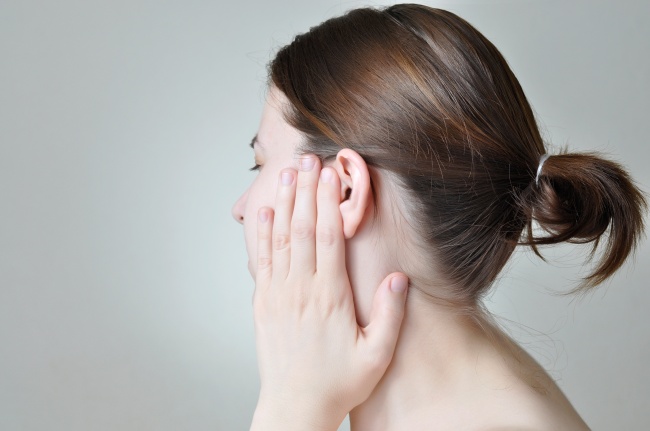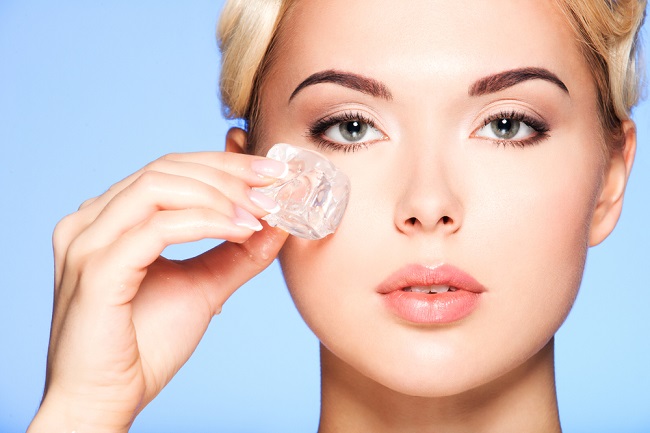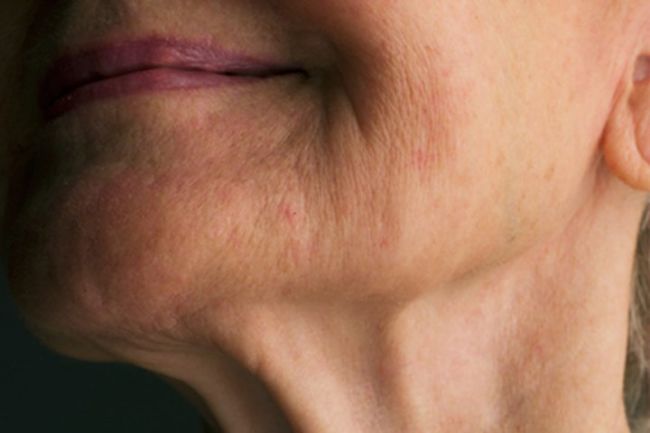Otalgia, or earache, is a common disease. Its causes can be varied, according to the symptoms that accompany it. If its origin is in the ear we speak of primary otalgia and if it comes from another place it is called secondary otalgia or referred to.

- Primary otalgia: it is the most common. It is mainly due to infectious pathology (otitis) of the middle and outer ear.
- Secondary otalgia: of extraotic origin. It is usually due to pathology in the temporomandibular (TMJ), dental, sinus, pharynmoamigdalar or laryngeal joint.
Types of otitis
The most common cause of primary otalgia is acute ear infection, but it may also be due to the causes listed above. The main pictures where an inflamed ear and an ear infection will normally be observed are:
- Diffuse otitis externa: infectious process of the skin of the outer ear. Produced by the entry of contaminated water, manipulation of the ear with cotones or use of hearing aids that prevent the normal expulsion of earwax.
- Necrotizing otitis externa: severe ear infection that occurs in immune-compromised patients such as diabetics, HIV+ and the elderly. It is a rapidly progressive picture that can lead to death.
- Perichondritis/cellulite of the atrial pavilion/otohematoma: These are related to stings or trauma.
- Acute otitis media: acute ear infection with exudate and short duration. The main cause of otalgia in children is that characterized by severe pain, occupation of the middle ear by serous, mucous or purulent fluid and inflammatory signs.
- Chronic otitis media: chronic inflammatory process of the mucoperiosteum of insidious onset, slow course and with evolution greater than 3 months, affecting the structures of the middle ear cavity, mastoid cells and Eustachian tube.
Signs and symptoms
The signs and symptoms with which we can recognize an otitis usually depend on the type of otitis, but usually occur with an inflamed ear and ear infection, which could guide us to identify an otitis.
Diffuse otitis externa
- The skin of the CAE is inflamed, reddened, sensitive and painful to the traction of the ear.
- Obstruction of the porrestos duct of skin, earwax and / or purulent secretion.
- Feeling of plugged ear, hearing loss, itching and otorrhea.
- Inflammation of the CAE prevents us from seeing its medial portion and tympanic membrane.
- The infection can spread to the tissues of the atrial pavilion making its mobilization very painful.
Necrotizing otitis externa
- It progresses to the bone.
- Intense otalgia.
- Otorrhea with granulation tissue.
- Poor response to usual treatment.
Perichondritis:
- The ear looks red, thickened, painful and warm to the touch.
Acute otitis media:
- The eardrum is red and gloomy, sometimes with hemorrhagic blisters. The tympanic membrane may be protruent, opaque or hyperemic.
- Sudden presentation and short duration.
- The CAE should not be affected.
- Tympanic perforation and exit of purulent material by the CAE which produces a remission of pain.
- It may develop with fever, decay, irritability, anorexia, vomiting, and other symptoms.
Chronic otitis media:
- Conductive hearing loss) (sound does not clearly reach the ear), caused by alterations in the transmission of sound to the inner ear
- Otorrhea of mucoid, mutism or purulent type.
- Symptoms such as acute vertigo, headache, otalgia, otorrhagia, facial paralysis among others, indicate that you should act quickly as some complications could occur.
Treatment
Treatments for ear infection depending on the type of otitis.
Diffuse otitis externa
The treatment consists of:
- Cleaning of the external ear canal, it is usually very sensitive and narrow, and then you should wait a day or two. If necessary this procedure should be repeated.
- Otological drops or ear drops with antibiotics that achieve a high concentration in the affected tissues. If there is also a major inflammatory process, ear drops with corticosteroids may be indicated to decrease inflammation of the ear. The duration of treatment should be at least 7 days.
- Avoid the entry of water into the ears.
- Anti-inflammatory analgesics orally.
- Local heat.
The drops must be placed correctly to be successful in the treatment. The patient should lie on his side, they should be administered by another person to avoid excessive placement and associated problems (fungi, maceration of the skin, among others). They should be warm (37°) to avoid dizziness or dizziness and stay in that position for 5 minutes.
Necrotizing otitis externa.
Its treatment should be with intravenous antibiotics and surgical debridement in the ward.
Perichondritis
It should be treated with antibiotics. Sometimes it is necessary to perform a surgical toilet or small drainage if a localized abscess has occurred.
Acute otitis media
The treatment of choice in an isolated condition and in a patient without previous antibiotic treatments is:
- Amoxicillin at doses of 90-100mg/kg per day divided into 2 doses for 7 to 10 days.
- Anti-inflammatory or decongestant for a few days while the pain subsides, the local heat can help in the acute stages of pain.
Chronic otitis media
Treatment will depend on the clinical conditions at the time of the primary evaluation. The goal is to control the pathological process and restore auditory function. But it is recommended:
- Care and care of upper respiratory tract infections.
- Avoid introducing any object into the ear.
- Do not apply oxygenated water, folk remedies or ear drops without prescription.
- Avoid the ingress of water to the ear.
It is very important that in the presence of any picture of otalgia, you go to a health professional, who diagnoses correctly and indicates a correct treatment, avoiding self-medication and possible complications.










